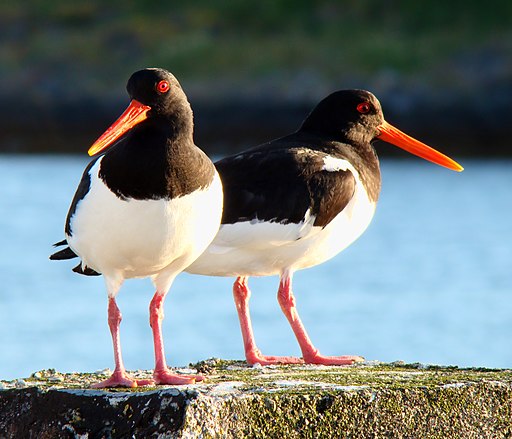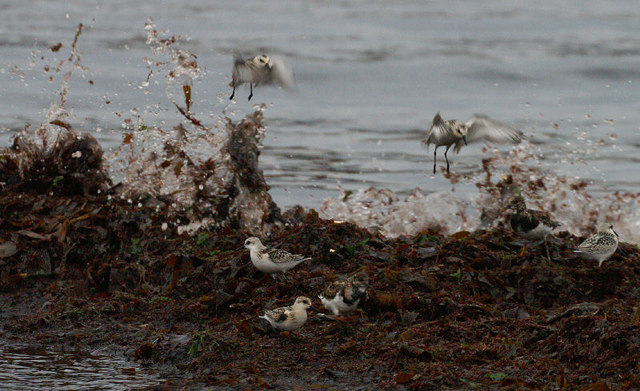
We often celebrate the beginnings of things, and the ends of things, but what about the middles? The middle can be a gray place, either boring or too eventful in all the wrong ways. That’s what this part of the year feels like to me– I’m missing the cozy days of early winter, where candles are a welcome novelty, when the early dark gives you reason to curl up with a book for an evening. Now, the days are a little longer, but not long enough for me to really enjoy the extra hours of daylight, only enough so that I feel like I’m struggling to keep up.
There’s a little bit of what could be hope out there—a handful of pear trees have started to push out white blossoms—but looming right behind them is an atmospheric river coming to grab the flowers by the fistful and smash them into the street. We’re just hovering here between the winter solstice and the spring equinox, and sometimes it feels like this is the year the balance just won’t tip toward the light. No wonder Punxsutawney Phil has trouble predicting how soon spring will come, when, like the rest of us, the groundhog is stuck in the middle of winter. (The groundhog’s forecasts, NOAA reports, have been right about 40 percent of the time during the last 10 years.)
Of course, the in-between time could also be the beginning of something else. In Ireland, St. Brigid’s Day on February 1—which started as the Celtic festival of Imbolc—marked the beginning of spring and the lambing season. I wonder how differently I’d feel if I considered this moment in the calendar to be spring—would it feel more welcome in its unsettledness?
I’m not sure. Part of me still wants to hibernate until the days are warm and the world seems less threatening. One study suggested the possibility that an extinct human species that lived in high-altitude caves in what’s now Spain did just that to deal with their extreme environment. Researchers now are looking at ways to induce torpor-like states to help with healing—doctors already lower some patients’ temperatures and metabolisms during some surgeries—and to protect future space travelers on long journeys.
As I’m thinking about the logistics that would be involved in starting my own hibernation experiment, it starts to rain, and so I reconsider walking to school to pick up one of the kids. I look up more facts about hibernation instead, and then facts about birds that hibernate (only the common poorwill is known to do it for long stretches, although many species go into short-term periods of torpor). I look up oystercatchers—called Giolla Bríd, the messenger birds of Brigid–and then the skies clear, and when my son comes out he is swinging his closed umbrella. “I have so many papers,” he says. “So many.”
When he gets home he lies down on the quilt my grandmother made that has a blue house in the center surrounded by birds, and flowers, and birds carrying flowers. I take out the papers, and in this middle time, I would like to lie down and cover myself in papers, but instead I look through them, one by one, deciding which ones I need to keep.
Brigid was once being chased by a group of men and when she came to the beach, there was nowhere else to run. The story goes like this: she lay down on the sand and asked for help. The oystercatchers that were lining the shore picked up pieces of kelp in their beaks and covered Brigid in layers and layers of kelp. When the men came, they couldn’t find her.

Brigid was the patron saint of fertility, of midwives, of poets and sailors and scholars and fugitives. Legend has it that she changed bathwater into beer. Some say that she performed Ireland’s first abortion. The combination of things under her purview makes me wonder, and not wonder, why the men were chasing her. I wonder how she knew when it was safe to get up. This is why I do not hide myself in papers, because I would stay there until the oystercatchers came to help.
Oystercatchers in Ireland are black and white with bright red beaks. The Irish Independent reported that they used to arrive to Ireland’s shores and estuaries by the thousands in winter, but now they’re harder to find. Here on the Pacific coast, black oystercatchers are relatively common and whistle loud enough to be heard over the sound of the waves.
Tonight, at 5:30, it is still light enough to walk along the bluffs in between storms. I see no oystercatchers, no gulls, no pelicans that have been cruising in formation all week long, their wingtips just skimming the water. The gnarled eucalyptus that perches on the edge of the cliff usually stinks like oily fish and the digestive tracts of hundreds of cormorants, but tonight the tree is empty and scentless. The waves are ripping through the kelp beds. Tomorrow at low tide, the tangled stalks will pile on the beach, and whatever lies beneath will take weeks to re-emerge.
I turn back, and a lone cormorant flies out toward sea and wheels around awkwardly. Cormorants: plain and prehistoric-looking, excellent at diving but clumsy in flight, dull black except in the moments when the light hits in just the right way. They have been considered omens of both bad luck and good, they are messenger birds of no one.
This particular cormorant careens toward the far side of the tree, and then I see them—dozens of cormorants on the tree’s bare, sea-facing branches that take the brunt of the wind. There is not enough light to make them gleam, there is not enough light to cast a shadow, but there is light enough to see. The cormorants huddle together in the balance between winter and spring, these small patron saints of middles, and I celebrate by watching them until they become a part of the dark.
*
Image of Eurasian oystercatchers by Bjørn Christian Tørrissen/Wikimedia Commons
Image of wave, kelp, and birds by Mike Pennington/Wikimedia Commons
This is really quite phenomenal.
She’s good, our Cameron.
Oh, Ann, I feel like I basically took your lovely post from Monday, took away the snow, and made it weird. Thank you, Sarah!
Snowless and weird, it’s not my post any more, it’s all yours. It makes me want to jump.
Oh, Cameron, this is so beautiful. As a lover of seaweed baths, I can recommend hiding under a pile of kelp every so often. The men will still exist when you emerge, but you will feel (or at least I do) a bit stronger, a bit more wildly sacred, and a bit more able to face them.
This essay was beautiful, thank you
A wonderful read!